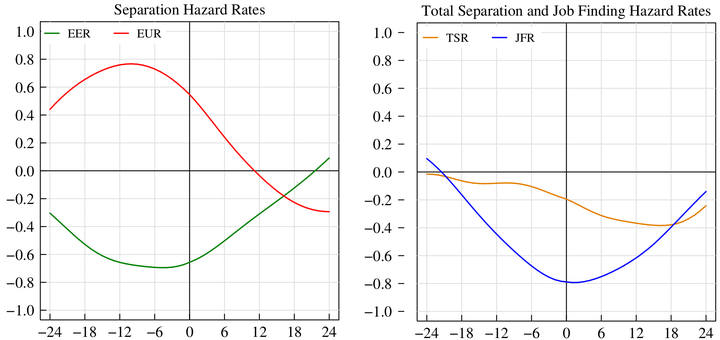Weekly Time Series of the U.S. Labor Market
 Cross-correlations of weekly hazard rates with unemployment rate
Cross-correlations of weekly hazard rates with unemployment rate
Abstract
Data from the Survey of Income and Program Participation (SIPP) are used to create a new data set of U.S. labor market behavior at weekly frequency, including the number of direct employment-to-employment (EE) transitions. The paper documents difficulties encountered creating the weekly series and discusses the strengths and weaknesses of the SIPP data relative to the CPS. Overall the SIPP labor force stocks, gross flows, and cyclical dynamics compare favorably with those from the Current Population Survey (CPS). Abstracting from labor force participation, direct EE transitions account for half of all separations from employment. Although CPS–based estimates of EE flows are nearly twice as high, the CPS overstates EE flows because of time aggregation. Separations to a new job are strongly procyclical while separations to unemployment are strongly countercyclical. The combination yields a nearly acyclical total separation rate.